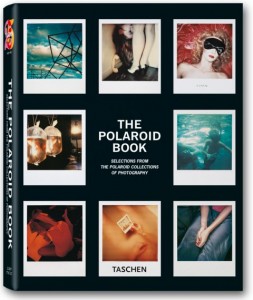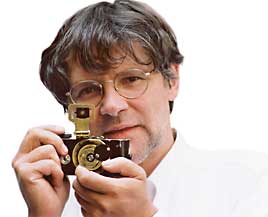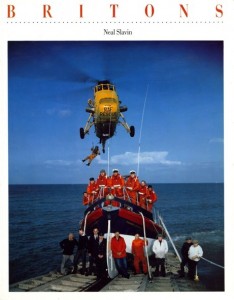 A most perplexing series of embarrassingly grandiose, self-flattering, and wildly inaccurate statements has appeared in a press release posted at the website of WestLicht Schauplatz für Fotografie in Vienna. This is the museum that acquired the portion of the former Polaroid Collection designated by the Trustee for the Minneapolis Bankruptcy Court as the “Swiss Assets,” which resided until recently in the holdings of the Musée de l’Elysée in Lausanne, Switzerland. The press release announces both the acquisition and a show derived therefrom opening June 17.
A most perplexing series of embarrassingly grandiose, self-flattering, and wildly inaccurate statements has appeared in a press release posted at the website of WestLicht Schauplatz für Fotografie in Vienna. This is the museum that acquired the portion of the former Polaroid Collection designated by the Trustee for the Minneapolis Bankruptcy Court as the “Swiss Assets,” which resided until recently in the holdings of the Musée de l’Elysée in Lausanne, Switzerland. The press release announces both the acquisition and a show derived therefrom opening June 17.
![]() The statements celebrate WestLicht Schauplatz für Fotografie’s acquisition of the 4400 works, and of course it’s good that they have a permanent home. It’s also good to remember that they had what everyone believed was a permanent home at the Musée de l’Elysée, with whom the Polaroid Corporation deposited these works on a presumably permanent basis when it closed down its European offices circa 1990.
The statements celebrate WestLicht Schauplatz für Fotografie’s acquisition of the 4400 works, and of course it’s good that they have a permanent home. It’s also good to remember that they had what everyone believed was a permanent home at the Musée de l’Elysée, with whom the Polaroid Corporation deposited these works on a presumably permanent basis when it closed down its European offices circa 1990.
The statements from Westlicht perturb me especially because, in a series of posts at this blog, I’ve laid out in considerable detail over the past two years the story of the making of this collection and its dissolution. So finding misinformation and disinformation about it in an official press release from a museum does not bode well. When museums show either a casual or calculated disregard for historical accuracy, we’re in trouble.
Let me list the erroneous statements, and correct them:
-
Factoid: “Between 1970 and 1990 a collection of 4.400 artworks from 800 artists and photographers (from Ansel Adams to Andy Warhol) was formed in close collaboration with Polaroid.
- Fact: Polaroid’s “Europa” Collection was not “formed in close collaboration with Polaroid.” It was conceived, created, supervised, and funded directly by the Polaroid Corporation. And it did not comprise just 4400 works, but closer to 6000.
- Factoid: “Then the legendary international collection disappeared for 20 years in the archives of the Swiss Musée de l’Elysée in Lausanne.”
-
Factoid: “Peter Coeln, owner of the museum WestLicht. Schauplatz für Fotografie in Vienna, now has saved the collection, which had been put on the market by the liquidators dealing with the assets of the insolvent company. For almost two years the future of the unique Polaroid collection was fairly uncertain. The spectacular acquisition at the last moment secures the continued existence of this historic collection and opens it to a broad public for the first time.”
- Fact: Unless the WestLicht Schauplatz für Fotografie intends to place the entire 4400-print collection on permanent display — highly unlikely, and curatorially irresponsible if true — the Polaroid works will be no more “open to a broad public” in Vienna than they’d been in Lausanne, where they were accessible and perfectly safe until the Trustee breached the understanding on which they’d been deposited with the Musée there and on which they’d resided there for 20 years.
- Factoid: “‘I am both happy and proud,’ Peter Coeln said, ‘that it was possible to keep the collection intact in its entirety and make it finally accessible.'”
 Fact: Per the previous clarification, the material acquired by Westlicht has been accessible for a long time in Lausanne, where its availability predates the creation of Westlicht, just now celebrating its 10th anniversary. And Polaroid’s European Collection has not been “intact in its entirety” since the corporation divided it and lodged it with the Lausanne and Paris institutions. Some time ago, the Trustee for the Minnesota Bankruptcy Court recalled the Paris component of the collection, which was either sold in pieces at the June 2010 Sotheby’s auction or incorporated into the 10,000-piece batch subsequently sold to a team of real-estate developers who plan a showroom for selections therefrom at 20 Exchange Place, a high-end residential-commercial building in Manhattan’s Wall Street district. And some pieces from the Lausanne segment of the collection were also recalled to the U.S.
Fact: Per the previous clarification, the material acquired by Westlicht has been accessible for a long time in Lausanne, where its availability predates the creation of Westlicht, just now celebrating its 10th anniversary. And Polaroid’s European Collection has not been “intact in its entirety” since the corporation divided it and lodged it with the Lausanne and Paris institutions. Some time ago, the Trustee for the Minnesota Bankruptcy Court recalled the Paris component of the collection, which was either sold in pieces at the June 2010 Sotheby’s auction or incorporated into the 10,000-piece batch subsequently sold to a team of real-estate developers who plan a showroom for selections therefrom at 20 Exchange Place, a high-end residential-commercial building in Manhattan’s Wall Street district. And some pieces from the Lausanne segment of the collection were also recalled to the U.S.- Factoid: “Estimated 300 million Polaroid cameras are still in use worldwide.”
-
Fact: With only one microbrew supplier of select sizes of Polaroid film, The Impossible Project, currently producing film, and that in comparatively small volume, this estimate is simply ridiculous. Apparently, they’ve completely misconstrued the estimate that the total number of Polaroids worldwide over 60 years amounted to 300 million cameras.
- Factoid: “Sotheby’s in New York auctioned rarities from the American collection in 2010. Due to the commitment of WestLicht, the European collection was saved from suffering the same fate.”
 Fact: The Trustee for the Minnesota Bankruptcy Court, charged with dispersing the collection to benefit the corporation’s creditors, has never proposed auctioning off additional selected rarities from the collection subsequent to the aforementioned Sotheby’s sale last year. As reported extensively in this blog, the 10,000-piece “Artex Assets” (what remained in storage in Waltham, MA, after that auction), the 4400-piece “Swiss Assets” (purchased by Westlicht), and the “Sotheby’s Assets” (a small group of works left over from the auction and still stored in New York), were offered only as lots.
Fact: The Trustee for the Minnesota Bankruptcy Court, charged with dispersing the collection to benefit the corporation’s creditors, has never proposed auctioning off additional selected rarities from the collection subsequent to the aforementioned Sotheby’s sale last year. As reported extensively in this blog, the 10,000-piece “Artex Assets” (what remained in storage in Waltham, MA, after that auction), the 4400-piece “Swiss Assets” (purchased by Westlicht), and the “Sotheby’s Assets” (a small group of works left over from the auction and still stored in New York), were offered only as lots.- Factoid: “Czech photographer Jan Hnizdo, chief operator of Polaroid, travelled to selected photographers and artists with this camera.”
-
Fact: Photographers most often came to the Polaroid 20×24 studio to do their work there, since the camera was difficult to transport. Sometimes the cumbersome camera hit the road, presented at such events as the Rencontres Internationales de la Photographie in Arles, France, and made available to photographers at those sites. Sometimes the camera went to locations indicated by specific photographers, for projects such as Neal Slavin’s Britons. Rarely did Hnizdo “travel to selected photographers and artists with this camera.”
•
Let me make this clear: While I believe that both segments of Polaroid’s European Collection should have remained with the institutions that cared for them lovingly after they received those deposits, I don’t begrudge the WestLicht Schauplatz Museum its acquisition of that portion of the original collection. I hope they do well by it, and that it does well for them. My concern remains the issuance of false and misleading statements that, inevitably, go viral and contaminate the knowledge base.
![]() For example, here are extracts from “Famed Polaroids Find Their Place in Vienna,” Rachel Feintzeig’s March 28, 2011 report in the Wall Street Journal‘s “Bankruptcy Beat” blog, clearly derived from the Westlicht press release.
For example, here are extracts from “Famed Polaroids Find Their Place in Vienna,” Rachel Feintzeig’s March 28, 2011 report in the Wall Street Journal‘s “Bankruptcy Beat” blog, clearly derived from the Westlicht press release.
- Factoid: “After a 20-year hiatus, an iconic collection of 4,400 pieces of artwork from the likes of Ansel Adams and Andy Warhol is getting its turn in the spotlight, and it seems to have Polaroid’s bankruptcy case to thank.”
- Fact: What “20-year hiatus”? The work was cared for and available in Lausanne. A substantial selection of the Polaroid works were exhibited there most recently from March 6-June 6, 2010; this show went on to be one of the highlights of the 2010 Rencontres Internationales de la Photographie in Arles, France, running from July 3-September 19. As for “having Polaroid’s bankruptcy case to thank” — balderdash. The European collection, in its two parts, was safe, sound, and well-used in its ostensibly permanent homes in Paris and Lausanne until those two bankruptcies. Neither bankruptcy benefitted the collections in any way; to the contrary, they put the collection in jeopardy and led to its dispersal.
- Factoid: “The collection, featuring instant photographs from world-renowned artists, had been languishing in the archives of the Swiss Musée de l’Elysée in Lausanne for two decades, according to reports.”
- Fact: No report I’ve seen describes the collection as “languishing” in Lausanne “for two decades.” Perhaps Feintzeig can source for us the unspecified “reports” containing this assertion.
- Factoid: “The 4,400-piece-strong prize rescued by Westlicht was originally formed between 1972 and 1990.”
- Fact: Westlicht “rescued” this collection from an older, more reputable, financially sound institution that had scrupulously housed, preserved, and utilized it for two decades on the understanding that this investment would be repaid by the inclusion of this work in its permanent collection, yet will receive no compensation for doing so now that it’s been yanked away — and, demonstrably, no thanks from Peter Coeln or Westlicht either. How rude.
•
As another example, here’s more of the same from “Vienna museum acquires 4,400 Polaroids, some by Warhol,” issued by Agence France-Presse with no byline, datelined March 27, 2011.
- Factoid: “‘At the last minute I was able to save this collection from being broken up in an auction,’ [Westlicht founder/director Peter] Coeln told AFP.”
- Fact: As stated above, the Trustee sold this collection as a lot, and neither planned nor announced any auction thereof. Indeed, the Musée de l’Elysée was seeking a donor to enable them to keep the collection in Lausanne when Westlicht made its successful preemptive bid.
- Factoid: “About 1,400 of the pictures are large format (50 x 60 cm, 20 x 24 inches) and were taken with special Polaroid cameras which Czech photographer Jan Hnizdo made available to some 800 artists between 1970 and 1990.”
 Fact: As indicated above (and reported correctly in the Westlicht release), Jan Hnizdo worked as an employee of the Polaroid Corporation, in the role of technician. As such, he supervised the 20×24 camera in the studio and, on occasion, on location at the Arles festival and elsewhere. But let’s give credit where credit is due, people: The Polaroid Corporation made this camera, and the film supplies, and the services of its technician, available to to those artists, in an unprecedented effort by a photography manufacturer to support the creative aspect of the medium.
Fact: As indicated above (and reported correctly in the Westlicht release), Jan Hnizdo worked as an employee of the Polaroid Corporation, in the role of technician. As such, he supervised the 20×24 camera in the studio and, on occasion, on location at the Arles festival and elsewhere. But let’s give credit where credit is due, people: The Polaroid Corporation made this camera, and the film supplies, and the services of its technician, available to to those artists, in an unprecedented effort by a photography manufacturer to support the creative aspect of the medium.
•
Note: Norman Mailer coined the term factoid in 1973, defining this as “facts which have no existence before appearing in a magazine or newspaper.” The Washington Times described Mailer’s new word as referring to “something that looks like a fact, could be a fact, but in fact is not a fact.” Combine the factoid with the meme — a term coined in 1976 by the British evolutionary biologist Richard Dawkins to explain the spread of ideas and cultural phenomena — and you begin to understand how, given the internet, factoids rapidly mutate into memes and achieve viral transmission. It’s a plague.
•
For an index of links to all previous posts related to this story, click here.









Allan,
It is unfortunate that WestLicht chose such marketing-speak for its announcement (and poorly translated to boot). I agree that needless exaggerations do not give credence to their intentions.
As an obviously interested observer of this process from the inside I can state that many people or institutions could have acquired the Polaroid Collections since 2008. One can certainly ask why the new Polaroid, instead of squandering millions on Lady Gaga did not step up and retrieve their legacy. After paying $85 million for a name, what’s a few million more to actually add some integrity to your efforts?
From what I have observed, the new owners of both collections intend to adhere to museum quality standards. Nathan Bruckner has worked closely with Eastman House before acquiring the American section and intends to build an extensive facility at 20 Exchange Place. It will be far more than lobby decoration.
As for Jan Hnizdo, he actually did travel extensively in Europe to bring the camera to artists. He has a customized Mercedes van that is essentially a studio on wheels. While the WestLicht release embellishes his role, he deserves credit for his contributions. As all operators of the camera know, we are far more than mere technicians as we participate in 20×24 shoots.
You are correct in stating that it was Polaroid policy that brought instant technology to these artists worldwide. Jon Holmes, Eelco Wolf, Sam Yanes, Barbara Hitchcock, Manfred Heiting and Connie Sullivan were instrumental through the years in leading Polaroid to build this collection. Credit Dr. Land above all for enabling this process from the beginning.
The reality is that this wonderful era is over. There are people trying to pick up the pieces and carry on. As I said many could have done this but these are the people who have done this. It is proper to criticize them if you feel they can do better. I would hope that the community supports them rather than dismiss them.
I did not intend to trivialize the contributions that Polaroid’s technicians — yourself included — made to the creation of 20×24 images. But Agence France-Presse’s story implies that Hnizdo was somehow making the 20×24 available to artists and photographers on his own, rather than as a Polaroid employee following company policy.
No one will be happier than I if the showcase at 20 Exchange Place in Manhattan turns out to be a truly substantial, museum-quality space. I’ll gladly eat humble pie, crow, and my hat in public should that eventuate.
The press release was unfortunate in foolish exaggeration. We hope to temper that in future declarations.
Jan did not work on his own, nor did I. We are involved in this moving forward. Details will come as we can divulge them. I sincerely hope we will do justice to the great legacy of Dr. Land and my colleagues at Polaroid.
I value your high standards of curatorial practice. I have been an artist, a technician (hate that term), marketing manager, and now owner of a film business. I sometimes feel like the last man standing on a battlefield of defeat. For whatever reason, I am still alive.
I am working with people who care deeply about the legacy. I welcome your reminders of previous high standards. You have been a friend and supporter of Polaroid as long as I can remember. I greatly value your input.
I think we all have the same motivation: Affirming the legacy of Polaroid by maintaining the integrity of the Polaroid Collection to the extent possible under the circumstances. Conserving the work and making it available is part of that task. Putting the historical facts on the record and ensuring their accuracy is another. So long as all involved proceed on those premises, we won’t go wrong.
I do not use the term “technician” in any pejorative sense, and will gladly substitute any you prefer, including whatever official designation Polaroid established for that role.
And I’ll gladly lend a hand to moving this forward, not just as a cultural journalist and critic but curatorially or in any other capacity.
Dear Sir. Thank you for all your time and impressing expertise you spent on this topic. I just learned about your work some weeks ago and unfortunately did not get the feeling that I need to dig deeper as you were writing about a person (Nathan Bruckner) in a very offending way without even directly contacting or asking him. Nathan is one of the most amazing people I have meet in the last years because he takes action and invests in his dream and visions, believes in the future instead of spending energy to feel bad because the past has gone.
The impossible team is working all around the clock in order to take care the inventions of dr land will be available in the future and all the people out there can continue to use their cameras.
We did our very best to learn about all ge facts and the wild history of the Polaroid collection. Listening to the people that teamed up with us to find solutions. Including Jan Hinzdo, Barbara hitchkock and bill Ewing the former director of the Museum in Lausanne, who personally asked me for support.
Anyhow, that said I will not dive deeper into the details of the past but will put all my energy into the future. Giving the collection back it’s soul, freeing it from the dusty chains of a museum, NOT treating this unique originals as normal photography and restarting the original Polaroid artist support programm. It will be mh true pleasure to show you what real passion can do. So please stay tuned and be prepared for many things that will make Dr Land very proud.
As I wrote in my skeptical January 13 post on the plans to do something with the former Polaroid Collection at 20 Exchange Place in Manhattan, “Happy to get proved wrong on any and all counts, as always. And glad to apologize to the Bruckners and the 20X team when they open a truly museum-quality space for the Polaroid Collection.”
And of course I’m aware of The Impossible Project, which I’ve mentioned repeatedly in my posts about Polaroid. Best wishes to you and your colleagues in this exciting venture.
A. D.—
Perhaps this communication is a non-issue by now. Nevertheless, may I point out that as we speak I do not think there is real showcase of Polaroid photography at 20 Exchange Place in Manhattan, neither is there a dedicated museum in Vienna presenting Polaroid photography in an appropriate setting.
Take care, Eelco
We never close, in terms of pursuing stories I initiate here.
I have always had my doubts, expressed in this series of posts, about the likelihood of the improbable 20 Exchange Place venue and the promised Vienna one.
I have contacted someone who knows the story behind the 20 Exchange Place Polaroid project, and hope to get a report from that party this fall. (For readers coming anew to this, a real-estate developer bought a self-contained chunk of the Polaroid Collection from the bankruptcy court designated attorney, pledging to develop a showcase for it at this new mixed retail and residential building in Manhattan’s Financial District.)
At some point I will follow up with the purchasers of the Polaroid Europa portion of the collection, the WestLicht Schauplatz für Fotografie in Vienna, to learn their plans (if any) for its public life. Presently it languishes in their collection.